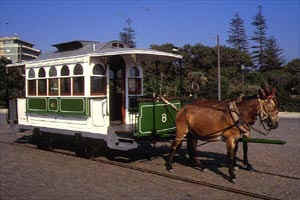The arrival of electricity in colonial Calcutta marked a defining technological milestone in India’s urban history. For millennia, electricity lived only in human imagination—witnessed in lightning, static charge, or the electric jolt of certain fish. Ancient Egyptians knew of electric catfish as early as 2750 BC, while Greeks and Romans recorded the numbing power of torpedo rays in their medical texts. Scientific analysis matured only after the Renaissance. In 1600, English scientist William Gilbert, through systematic experimentation, differentiated magnetism from the static charge produced by rubbing amber. A century and a half later, Benjamin Franklin demonstrated that lightning was electrical in nature by flying a kite with a metal key during a storm, drawing sparks to his hand—a daring experiment that changed scientific thinking.
Yet electricity had little practical use until the 19th century. Inventors including Humphry Davy, Joseph Swan, William Sawyer, Henry Woodward, and Mathew Evans built incandescent lamps of various types, but most burned out quickly.
Thomas Edison’s breakthrough in January 1880—using a coiled carbon filament connected to platinum contact wires—finally produced a durable, commercially viable bulb. This success, combined with the development of
alternating current transmission, transformers, and dependable power stations, opened the door to electrifying modern cities.
New York became the world’s first electrified city in 1882, followed by London in 1888. Calcutta—then the capital of British India and the second most important city of the British Empire—took its first formal step seventeen years after New York. The city already had a vibrant industrial and mercantile economy, modern docks, printing houses, jute mills, and
telegraph links with the world. Electrification would not only illuminate streets and homes but also transform transport, factories, and civic life.
The first demonstration of electric light in Calcutta occurred on 24 July 1879 by P. W. Fleury & Co. Another, more extensive, demonstration was organized in 1881 when Dey Sil & Co. illuminated 36 electric lamps at the
Garden Reach Cotton Mills owned by Mackinnon & Mackenzie. Calcutta’s citizens, accustomed to gas lamps and kerosene, gathered in large crowds to witness the novel white brilliance of electric light.
To regulate commercial power distribution, the Government of Bengal passed the
Calcutta Electric Lighting Act in 1895. On 7 January 1897, Kilburn & Co., registered in London, secured the first official electricity license in India as agents of the Indian Electric Company. Soon renamed the Calcutta Electric Supply Corporation (CESC), the company expanded its capital and built infrastructure across the city.
The first thermal power station was commissioned at
Emambaugh Lane on 17 April 1899. Powered by an 800-horsepower generation unit with eight dynamos and a large storage battery system, it could operate nonstop and illuminate up to 60,000 lamps—later 200,000—on a 24-hour basis. Early consumers included the Bank of Bengal (today’s State Bank of India), the
Bengal Club on Chowringhee, and several elite residences.
Lord Curzon’s Government House soon switched to electric lighting. Industries followed, including the Government Army Clothing Factory in Alipore and the military installations of Fort William.
Electricity quickly changed daily life in the sweltering city. The long era of
punkahs—cloth fans pulled by manual labour—began to disappear as
electric ceiling fans became a common aspiration. Electric streetlights made night-time travel safer, allowing shops, cinemas, clubs, and restaurants to stay open longer. The urban skyline, once dim, now glowed.
Above image: The electrification of Calcutta took place 17 years after New York, the first city to have electricity in 1882 and eleven years after London, which was electrified in 1888. P W Fleury & Co was the first one in India that conducted first demonstration of electric light in Calcutta on 24 July, 1879. Yet another demo was done by Dey Sil & Co on 30 June, 1881 and it lit up 36 electric lights in the Garden Reach Cotton Mills owned by Mackinnon & Mackenzie...........
Above image: The first
horse-drawn trams entered service in erstwhile Calcutta on February 24, 1873. While today, Kolkata remains the only city in India with an operational tram system, there was a time when tramcars could be found across the country, from Bombay to Bhavnagar.On Friday (February 24,2023), Kolkata’s iconic tram service celebrated 150 years since the first tram was flagged off
...........
Fan and Punkah - country fan hanging from the ceiling was over, replaced by electric fans that gave relief to people who were sweating it out under the tropical hot sun. The Calcutta High Court, the Government owned Army Clothing Factory at Alipore, Fort William and other places switched over to electricity and also electric fan between 1899 and 1902. As part of improving public transport system to move people to different locations within the city, in 1902 electric tramway was introduced replacing horse drawn carriages, which were popular then.
Public transport saw the biggest revolution. Since 1873, Calcutta had run India’s first horse-drawn trams. By 1902 these were replaced with electric tramcars powered by overhead wires. This made Calcutta the first city in Asia to have an electric tramway, and the network soon stretched from Esplanade to bustling suburbs such as Kidderpore, Maniktala, and Shyambazar. Trams reduced noise, eliminated animal waste on streets, and dramatically increased speed and capacity.
By 1912, around 6,000 consumers used 12 million units of power annually. Electric bulbs—often 25-watt carbon filament lamps—became common in homes, shops, and printing presses. With time, CESC continued to build larger power stations, including the landmark
Mulajore plant in 1926.
Within a generation, electricity reshaped Calcutta’s identity—from colonial capital to a modern metropolis. What began as an experiment became a force that drove industry, transformed lifestyles, and made the city one of the earliest and most electrified urban hubs in Asia. The glow of electric lamps and the hum of trams heralded a new era—an era of light, speed, and technological confidence in the heart of British India.


















